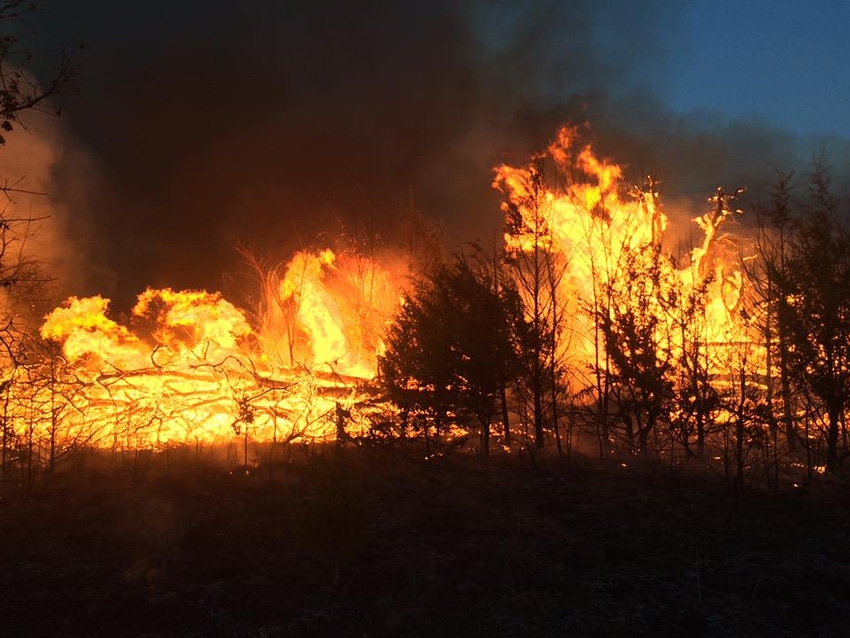Forest Service wildland fire suppression costs exceed $2b
Perdue renews call for congress to fix “fire borrowing” problem.
September 15, 2017

U.S. Agriculture Secretary Sonny Perdue announced Sept. 14 that wildland fire suppression costs for the fiscal year have exceeded $2 billion, making 2017 the most expensive year on record.
Wildfires have ravaged states in the West, Pacific Northwest and northern Rockies regions of the U.S. this summer. As the U.S. Department of Agriculture's Forest Service passed the $2 billion milestone, Perdue renewed his call for Congress to fix the way the agency’s fire suppression efforts are funded.
“Forest Service spending on fire suppression in recent years has gone from 15% of the budget to 55% — or maybe even more — which means we have to keep borrowing from funds that are intended for forest management,” Perdue said. “We end up having to hoard all of the money that is intended for fire prevention, because we’re afraid we’re going to need it to actually fight fires. It means we can’t do the prescribed burning, harvesting or insect control to prevent leaving a fuel load in the forest for future fires to feed on. That’s wrong, and that’s no way to manage the Forest Service.”
Currently, the fire suppression portion of the Forest Service budget is funded at a rolling 10-year average of appropriations, while the overall Forest Service budget has remained relatively flat. Because the fire seasons are longer and conditions are worse, the 10-year rolling fire suppression budget average keeps rising, chewing up a greater percentage of the total Forest Service budget each year, USDA said, meaning that the Forest Service has had to borrow from prevention programs to cover fire suppression costs.
Perdue said he would prefer that Congress treat major fires the same as other disasters that are covered by emergency funds so that prevention programs are not raided.
“We’ve got great people at the Forest Service and great procedures and processes in place,” Perdue said. “We can have all of that — the best people, the best procedures and the best processes — but if we don’t have a dependable funding source in place, then we’ll never get ahead of the curve on fighting fires.”
This fiscal year, Congress appropriated additional funding above the 10-year average — almost $1.6 billion total — to support Forest Service firefighting efforts, but even that amount has not been enough. With three weeks left in the fiscal year, the Forest Service has spent all of the money Congress appropriated for fire suppression, which means the agency has borrowed from other programs within its budget to meet this year’s actual fire suppression costs.
Continuous fire activity and the extended length of the fire season is driving the increased costs. At the peak of western fire season, there were three times as many large fires uncontained on the landscape compared to the five-year average and almost three times as many personnel assigned to fires. More than 27,000 people supported firefighting activities during peak western fire season. The Forest Service had been at Preparedness Level 5 — the highest level — for 35 days as of Sept. 14. Approximately 2.2 million acres of National Forest system lands burned during that time.
“We are breaking records in terms of dollars spent, acres of National Forest land burned and the increased duration of fires,” Forest Service chief Tony Tooke said. “Our firefighters are brave men and women who risk their own lives to protect life and property. We must give them every opportunity to do their jobs effectively through better management of the forests in the first place.”
The mission of the U.S. Forest Service, an agency within USDA, is to sustain the health, diversity and productivity of the nation’s forests and grasslands to meet the needs of present and future generations. The agency manages 193 million acres of public land, provides assistance to state and private landowners and maintains renowned forestry research and wildland fire management organizations. National forests and grasslands contribute more than $30 billion to the American economy annually and support nearly 360,000 jobs. These lands also provide 30% of the nation’s surface drinking water to cities and rural communities, with approximately 60 million Americans relying on drinking water that originates from the National Forest System.
You May Also Like


